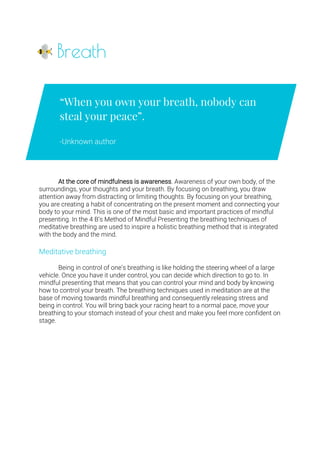The document introduces the 4 B’s method of mindful presenting, which combines mindfulness techniques with public speaking skills to help reduce anxiety and improve communication. It emphasizes understanding one's mind, body, breath, and beliefs, and includes techniques for stress reduction, body awareness, and effective storytelling. The course aims to empower speakers to connect authentically with their audience and master their public speaking skills through practiced mindfulness.









